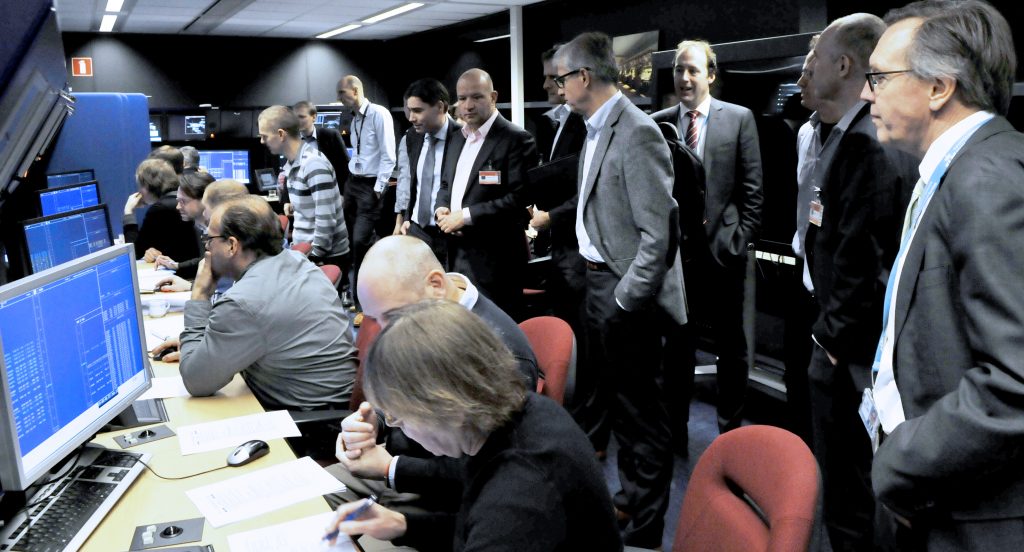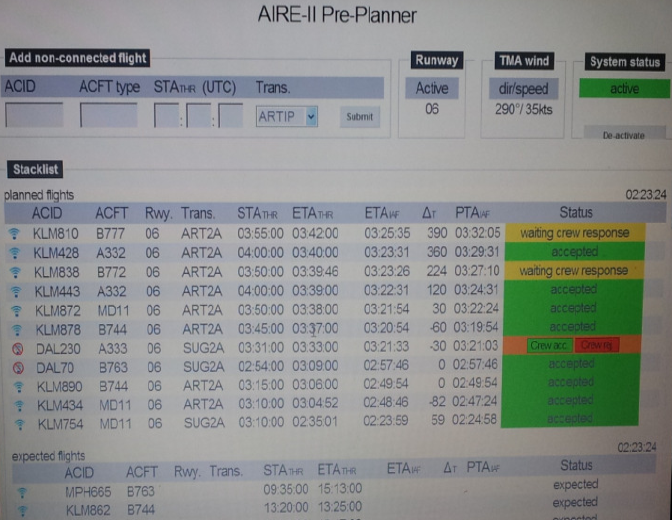The more parameters the better? A study on DAPs seeking a balance between supply and requirements Dutch air traffic controllers currently use three Downlink Airborne Parameters, or DAPs. These are handy as they provide useful information about the aircraft: selected altitude, indicated airspeed and magnetic heading. These parameters are only a fraction of the wide […]
Read MoreProjects
In developing a more efficient European airspace (Single European Sky), important objectives are that one the one hand shorter routes can be flown and that on the other hand additional distances flown due to the presence of (closed) military airspace are limited as much as possible. To achieve this, military flying areas will be re-located […]
Read MoreProblem Area As a consequence of the mandatory implementation of Datalink applications on airplanes operating above flight level 285, new opportunities may arise. More specifically, CPDLC Datalink applications may also be utilized below flight level 285 and at Schiphol airport. The aim of the KDC project PRJ-1945 “Datalink Business Case Study” is to conduct an […]
Read MoreArrival Management at Long Distance
Arrival Managers (AMANs) support air traffic controllers in the planning of arrival times. These systems calculate the estimated time of arrival and the optimal landing sequence of approaching aircraft. Based on this data air traffic controllers are able to adjust the aircraft speed earlier on during the flight which enables aircraft to join the chain […]
Read MoreSuccessful AMAN validation session!

On Wednesday December 11th, a validation session was held at NLR in which the new inbound planning system ASAP (Advanced Schiphol Arrival Planner) was demonstrated. The objective of this session was to ascertain that the system meets all operational requirements in order to start using the system. To this goal, a set-up was created at […]
Read MoreThe Dutch aviation sector (KLM, Amsterdam Airport Schiphol, LVNL), together with the Department of Infrastructure and Environment have jointly committed to develop a new concept for the Schiphol terminal airspace operations. This concept consists of fixed arrival routes and continuous descent operations. Fixed arrival routes, like standard instrument departures have the tendency to negatively affect […]
Read MoreVisual Problem Solving and Self-regulation in Training Air Traffic Control
The main objective of this study is twofold: Firstly, to conduct a task analysis to identify which visual skills are important for ATCOs, and secondly to develop instructional guidelines that will contribute to preparing ATCO students better for lifelong learning.
Read More
The KDC has made a major contribution to the successful completion of the AIRE project, commissioned by SESAR Joint Undertaking (SJU). The KDC role was to provide NLR expertise to the AIRE projectteam. In the project the KDC partners KLM and LVNL worked together with Delta Airlines, NATS and Eurocontrol Maastricht.
Read MoreThe KDC study Increased Schiphol Sustainability focused on the identification of near term solutions to maintain airport capacity under adverse weather conditions. The study was performed as a sequel to two earlier studies which also touched on the same subject but with a different focus: the studies Increased Groundhandling Capacity and Increased Landing Capacity (KDC, […]
Read MoreLVNL is implementing Mode-S Enhanced Surveillance (EHS) to make the ATM system even safer and more efficient. This technique consists of an aircraft transponder which is suitable for transmitting Mode-S data, and the radar on the ground that is suitable for receiving Mode-S data. AIC-A 01/05 of 2007 regulates which data from the aircraft must […]
Read More